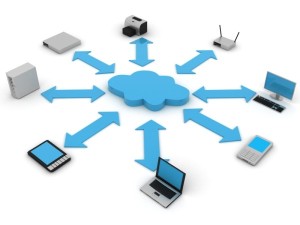 Everything’s coming up mobile these days. Gartner estimates that PC sales will make up only about 13 percent of device sales in 2013 – and some undisclosed portion of those PCs are notebooks.
Everything’s coming up mobile these days. Gartner estimates that PC sales will make up only about 13 percent of device sales in 2013 – and some undisclosed portion of those PCs are notebooks.
The more we rely on small, mobile devices to get things done, the more we also depend on cloud storage and services to extend functionality beyond what the mobile device itself is capable of. That’s why mobile and cloud will become mobile cloud.
The IEEE Computer Society lists mobile cloud as one of its Top Technology Trends for 2014. IEEE explains, “Mobile devices are constrained by their memory, processing power, and battery life. But combined with cloud computing, data processing and storage can happen outside of mobile devices.”
Storage is a major constraint for most mobile devices. Smartphones typically have only 8GB or 16GB of local storage, while tablets tend to have 32GB or more but still max out at 128GB. Ultrabooks, and many notebook PCs, have abandoned traditional hard drives in favour of solid state drives (SSD), which are typically only 128GB or 256GB. There are larger SSDs, but they’re prohibitively expensive for most purposes.
The cloud, on the other hand, has virtually limitless storage. Whether you use Box, or Dropbox, or SkyDrive, or Google Drive, you can add gigabytes or even terabytes of data that are accessible from your mobile device as long as you have a Wi-Fi or cellular signal to connect to the cloud.
There are two significant benefits for using cloud storage with a mobile device. The first is that you can store and access much more data than your mobile device is capable of holding. Second, in the event that your mobile device is lost or stolen, your data is still safe and accessible.
The symbiotic relationship between mobile and cloud goes beyond storage. A mobile device is a computing and engineering marvel, but it has limitations in terms of what it can do. Whether your mobile device is an ultrabook, tablet, or smartphone, it will have local storage and native applications, and it will be capable of performing most tasks locally just fine. But, the cloud will help the mobile device do the “heavy lifting” when necessary.
The convergence of mobile and cloud into a single, cohesive, symbiotic platform has been dubbed by IDC as the “Third Platform”. The mobile cloud will allow for better access to and synchronisation of data, improved scalability and reliability, and an ability to collaborate and access business applications from virtually anywhere and at any time.
The mobile and cloud trends still have unique aspects of their own and will continue to evolve separately, but mobile cloud will be a force that changes how, when, and where we get things done with our mobile devices.





